Mold growth in the laundry room can be a serious health hazard if left unchecked. As a mold remediation specialist, I have seen the devastating effects that mold can have on individuals and their homes. The laundry room, in particular, is a prime location for mold growth due to its moist environment and frequent use of water. Mold spores can easily spread throughout the home, leading to respiratory issues and other health problems.
As someone who has dedicated their career to helping others avoid the dangers of mold growth, it is important to understand how to prevent it from occurring in your laundry room. With some simple steps and awareness of potential risk factors, you can protect yourself and your loved ones from harmful mold exposure. In this article, we will explore some key strategies for avoiding dangerous mold growth in the laundry room, including proper ventilation, regular cleaning habits, and identifying potential problem areas.
Understanding The Dangers Of Mold Growth
According to recent studies, mold is not just a household nuisance but also poses a significant health hazard. Mold spores can cause respiratory problems, allergies, and even trigger asthma attacks. Understanding the mold hazards is essential in preventing its growth inside our homes. Moisture and poor ventilation are leading causes of mold growth, making the laundry room an ideal breeding ground for these hazardous molds.
Preventing mold growth in other areas of the house starts with understanding how it thrives. Mold needs moisture, warmth, and organic material to grow. Any area that has these conditions will be at risk of developing mold if left unchecked. Bathrooms are particularly prone to mold growth due to high humidity levels from constant showers and baths.
Laundry rooms are often overlooked when it comes to preventing mold growth within our homes. However, they are equally susceptible to mold infestations as any other area of the house. Laundry rooms are often damp due to washing machines that use water and dryers that emit moisture during their operation. It’s crucial always to keep this space clean and dry to avoid creating ideal conditions for common mold species found in laundry rooms like Aspergillus or Penicillium molds.
Identifying Common Mold Species Found In Laundry Rooms
Understanding the dangers of mold growth is crucial for preventing its occurrence. Identifying common mold species found in laundry rooms can help in developing effective prevention methods for mold growth. It is important to note that mold thrives in warm, damp environments and can pose a significant threat to health if left unchecked.
Identifying common mold species found in laundry rooms can be challenging since there are many types of molds that grow in this area. Some of the most prevalent ones include Alternaria, Aspergillus, Cladosporium, Penicillium, and Stachybotrys. These molds can cause allergies, respiratory problems, and even neurological disorders if not eradicated early.
Prevention methods for mold growth should be implemented as soon as possible to avoid dangerous consequences. It is advisable to keep the laundry room well-ventilated by opening windows or using dehumidifiers to reduce humidity levels. Regular cleaning of the washing machine and dryer is also crucial since they provide an ideal environment for mold growth due to their moist nature. Additionally, washing clothes frequently with hot water and drying them completely before storing them can prevent moisture from accumulating on fabrics.
- Keep the laundry room clean and dry at all times.
- Use exhaust fans or open windows when doing laundry.
- Inspect plumbing regularly for leaks.
- Avoid overloading the washing machine.
- Store detergents and other chemicals away from children’s reach.
In summary, identifying common mold species found in laundry rooms is critical in developing effective prevention methods for their growth. Prevention methods should be implemented consistently to avoid dangerous consequences such as respiratory problems or neurological disorders caused by exposure to molds. By following these guidelines diligently, homeowners can keep their families safe from the risks posed by mold growth in the laundry room. The next section will discuss risk factors for mold growth in the laundry room that homeowners should be aware of.
Risk Factors For Mold Growth In The Laundry Room
- Humidity is one of the key risk factors for mold growth in the laundry room, as high humidity creates a moist environment that encourages the growth of mold.
- Proper ventilation is essential to reduce the humidity in the laundry room, as ventilation helps to remove excess moisture and keep humidity at safe levels.
- It is important to take measures to reduce the humidity in the laundry room, such as using a dehumidifier or using an exhaust fan to vent out the warm, moist air.
- It is also important to keep the laundry room well-ventilated and free of any potential sources of moisture, such as water leaks or damp clothing, to help prevent the growth of mold.
Humidity
Humidity is one of the most significant risk factors for mold growth in the laundry room. It can be caused by several reasons, such as improper ventilation, leaks, or even the use of a clothesline inside the laundry room. High humidity levels can lead to an ideal environment for mold spores to grow and spread throughout the area.
To avoid dangerous mold growth in the laundry room due to high humidity levels, it is vital to control moisture adequately. Installing a dehumidifier is a great way to regulate humidity levels and prevent mold growth. Dehumidifiers work by removing excess moisture from the air and collecting it in a water tank. By reducing moisture levels, dehumidifiers decrease the chances of mold growth significantly.
In addition to using dehumidifiers, other moisture control techniques should also be implemented in the laundry room. These techniques may include fixing any leaks or water damage, improving ventilation by installing exhaust fans or opening windows, and ensuring that clothing is dry before placing it in storage areas. By taking these necessary steps, homeowners can minimize their risks of developing dangerous mold problems in their laundry rooms.
Ventilation
Maintaining proper ventilation is crucial in preventing mold growth in the laundry room. Without adequate airflow, moisture can accumulate and create a breeding ground for mold spores to thrive. Maximizing airflow can be achieved by installing exhaust fans or opening windows to improve air circulation. By doing so, stagnant air that promotes mold growth can be eliminated.
Installing exhaust fans is an effective way to increase ventilation in the laundry room. These fans work by drawing out excess moisture and humid air from the room and releasing it outside. It is essential to ensure that the fan’s ducts are properly installed to prevent any leaks or damages that may contribute to mold growth. Exhaust fans should be run during and after doing laundry until the humidity level reaches around 30-50%, which is considered optimal for preventing mold growth.
It is also advisable to keep doors open when possible to maximize airflow in the laundry room. Doing so allows air to circulate freely, reducing moisture levels, and discouraging mold growth. Moreover, ensuring that clothing is adequately dried before storing them away can help minimize moisture accumulation in storage areas. By prioritizing proper ventilation techniques such as installing exhaust fans and maximizing airflow, homeowners can significantly reduce their risks of developing dangerous mold problems in their laundry rooms.
Maintaining Proper Ventilation To Prevent Mold
Ventilation maintenance is essential to prevent mold growth in the laundry room. Proper ventilation helps to maintain a healthy level of indoor air quality, which prevents moisture buildup. Without proper ventilation, moisture can accumulate in the laundry room, leading to a perfect breeding ground for mold and bacteria, which can cause health problems.
One way to maintain proper ventilation is by ensuring that your laundry room has adequate airflow. This can be achieved by keeping windows and doors open or installing an exhaust fan if necessary. Another way is to regularly clean air filters, as they can become clogged with dust and debris over time, reducing their effectiveness in removing moisture from the air.
Preventing moisture buildup is critical when it comes to preventing mold growth. To achieve this, it’s important to fix any leaks or water damage immediately. Additionally, try not to hang wet clothes indoors as this can increase the humidity levels in the room. Instead, hang them outside or use a dryer if possible. By following these simple steps, you’ll be able to maintain proper ventilation and prevent moisture buildup in your laundry room effectively.
Moving forward, choosing the right laundry detergent is also crucial in avoiding mold growth in your laundry room. By selecting a detergent that contains anti-fungal properties and doesn’t leave behind any residue on your clothes or washing machine, you’ll be able to reduce the chances of mold growth significantly. In the next section, we’ll discuss some tips on how to choose the right type of detergent for your needs.
Choosing The Right Laundry Detergent To Avoid Mold Growth
Maintaining proper ventilation is crucial in preventing mold growth in your laundry room. However, choosing the right laundry detergent can also make a significant impact on mold prevention. When it comes to choosing detergents, eco-friendly options are better than chemical ones as they are less likely to contain harmful ingredients that can promote mold growth.
Eco-friendly detergents generally contain natural ingredients such as plant-based surfactants, enzymes, and essential oils. These ingredients are effective in cleaning clothes while being gentle on the environment and human health. In contrast, traditional chemical detergents often contain harsh chemicals such as phosphates, chlorine bleach, and synthetic fragrances that can cause skin irritation and respiratory problems. Additionally, these chemicals can leave behind residues that can create a favorable environment for mold growth.
When comparing natural versus chemical laundry detergents, it’s clear that eco-friendly options are the way to go for mold prevention. Not only are they safer for you and the environment, but they also help maintain a clean and healthy living space. By making a conscious effort to switch to eco-friendly detergents, you’re taking an important step towards preventing dangerous mold growth in your home. In the subsequent section, we will discuss how to properly clean your laundry room to further enhance your efforts in preventing mold growth.
How To Properly Clean Your Laundry Room To Prevent Mold
A clean laundry room is essential to prevent mold growth. Effective cleaning and preventive maintenance can ensure that your laundry room remains mold-free. The first step in preventing mold growth is to keep your laundry room dry. This can be achieved by using a dehumidifier or opening windows to allow for air circulation.
Once you have ensured that the laundry room is dry, the next step is to clean it thoroughly. Start with wiping down surfaces with a solution of bleach and water or a commercial disinfectant. Pay particular attention to areas prone to moisture, such as the washing machine drum, gasket, and detergent dispenser, as well as the dryer lint trap and exhaust hose.
Regular preventive maintenance will also help keep your laundry room free of mold. Here are three important tasks you should perform regularly:
- Clean out the lint trap after each use.
- Check the washing machine hoses for leaks or cracks every six months.
- Inspect the dryer vent pipe for blockages at least once a year.
By following these effective cleaning methods and performing regular preventive maintenance, you can ensure that your laundry room remains free of dangerous mold growth.
To continue preventing mold growth in your home, it’s important to know how to properly dry your clothes after washing them.
Tips For Drying Clothes To Prevent Mold Growth
Effective drying of clothes is crucial to preventing mold growth in the laundry room. The first step is to ensure proper air circulation in the room. A well-ventilated laundry room allows moisture to escape, which inhibits mold growth. Open windows and doors, or use fans and dehumidifiers to increase airflow.
Another key factor is moisture control. Clothes should be thoroughly wrung out before placing them on a drying rack or clothesline. Avoid overcrowding the drying area as this will trap moisture, leading to prolonged dampness that encourages mold growth. Additionally, avoid leaving wet clothes in the washing machine for extended periods.
Sun drying remains one of the best methods for preventing mold growth on laundry. It eliminates moisture from clothing efficiently while also providing natural disinfection from ultraviolet rays. However, indoor drying racks are a viable alternative when sun-drying isn’t feasible – especially during winter months or high humidity conditions. To ensure maximum effectiveness when using indoor drying racks, place them near windows or fans for improved air circulation.
By following these tips for effective clothes drying and preventing mold growth in your laundry room, you can avoid costly remediation efforts while ensuring a healthy living environment for you and your family.
Moving forward, it’s crucial to be aware of signs of mold growth in the laundry room and how to address them appropriately.
Signs Of Mold Growth In The Laundry Room And How To Address Them
To prevent dangerous mold growth in the laundry room, it is essential to understand what causes it. Laundry room moisture is one of the leading contributors to mold growth. Moisture can come from several sources such as damp clothing, wet floors, or even humid weather. To avoid this, ensure that your laundry room is well-ventilated and has a dehumidifier installed. Additionally, always dry clothes thoroughly before storing them away.
DIY mold testing can be an effective way to identify signs of mold growth in your laundry room. You can purchase a mold testing kit from your local hardware store and follow the instructions provided to collect a sample of suspected mold. If you detect any signs of growth, it’s essential to address them immediately before they become a more significant problem. This could involve cleaning contaminated areas with a bleach solution or calling in professional help.
In some cases, it may be necessary to seek professional mold inspection and remediation services. These specialists have the knowledge and equipment needed to identify and eradicate dangerous mold growth safely. If you suspect that there is extensive mold growth in your laundry room or have tried DIY methods without success, calling in professionals is highly recommended. They can perform a thorough inspection of your property and provide advice on how best to proceed with remediation efforts while ensuring that your home remains safe from harmful spores.
Professional Mold Inspection And Remediation Services
Hiring a Professional is essential to properly detect and remove mold. A trained, qualified inspector can accurately assess the extent of the contamination and identify the source of the problem. The inspection process typically includes a visual inspection, air quality testing and moisture readings. Remediation techniques should be based on the inspector’s findings and may include removal of mold-contaminated materials, use of sealants and fungicides, installation of ventilation systems, and/or air filtration systems. It is important to follow the inspector’s recommendations to ensure that the job is done correctly and that the underlying cause of the mold infestation is addressed. Professional mold remediation services are necessary to protect the health and safety of occupants in the home.
Hiring A Professional
As a mold remediation specialist, I highly recommend hiring a professional for mold inspection and remediation services. There are several benefits of hiring a professional that outweigh the cost of their services. First and foremost, professionals have the necessary training and experience to identify different types of molds, their sources, and the extent of the damage caused by them. This enables them to develop an effective plan for resolving the issue, which may involve using specialized equipment or techniques.
Another benefit of hiring a professional is that they can help prevent future mold growth in your laundry room. Mold remediation specialists use advanced technology and products to eliminate mold spores, bacteria, and viruses from surfaces in your home. They also provide recommendations on how to maintain proper ventilation and humidity levels in your laundry room to prevent mold growth in the future.
It is important to note that while it may seem costly to hire a professional for mold inspection and remediation services, it could save you money in the long run. If left untreated, mold can cause severe damage to your property, leading to costly repairs or even health problems for you and your family. Therefore, investing in professional services is a wise decision that can protect both your property and your health.
Inspection Process
As a mold remediation specialist, I cannot emphasize enough the importance of hiring professionals for mold inspection and remediation services. One crucial aspect of the process is the inspection, which involves a thorough examination of your laundry room to identify any mold growth or water damage. This step is critical because it helps determine the extent of the problem and enables specialists to develop an effective plan for resolving it.
The inspection process typically involves visual inspections, moisture readings, air sampling, and surface sampling. A professional will examine all areas of your laundry room, including walls, ceilings, floors, and appliances to identify any signs of mold growth or water damage. They will also use specialized equipment such as thermal imaging cameras to detect hidden moisture sources.
In conclusion, hiring professionals for mold inspection and remediation services is essential in maintaining a healthy living environment in your home. The inspection process plays a critical role in identifying the source and extent of mold growth while developing an effective plan for resolving it. Therefore, if you suspect that there is mold growing in your laundry room or other areas of your home, do not hesitate to contact a professional for assistance.
Remediation Techniques
Now that we have discussed the importance of mold inspection, it is time to consider remediation techniques. Once mold growth has been identified in your laundry room or other areas of your home, a professional will develop an effective plan for resolving the issue. The goal of remediation is not only to remove visible mold but also to prevent its return and the potential health hazards associated with it.
Effective solutions for preventing mold growth include repairing any water damage or leaks that may be present, improving ventilation in your home, reducing humidity levels, and regularly cleaning and maintaining appliances such as washing machines and dryers. In addition to these preventative measures, there are various remediation techniques that professionals may use depending on the extent of the problem.
One common technique used by professionals is removing affected materials such as drywall or carpeting that cannot be salvaged due to extensive mold damage. This process involves safely disposing of contaminated materials and replacing them with new ones. Another effective solution is using specialized equipment such as air scrubbers and HEPA vacuums to remove airborne mold spores and other contaminants from your home’s air supply. These techniques ensure that any remaining mold spores are removed from your home, preventing future growth and potential health hazards.
Creating A Mold Prevention Plan For Your Home’s Laundry Room
Laundry room organization is a critical aspect of preventing mold growth. Cluttered and poorly ventilated spaces can lead to moisture buildup, which creates an environment conducive to mold growth. To avoid this, homeowners must ensure that their laundry rooms are kept clean and organized at all times. This includes regular cleaning of appliances like washing machines and dryers, disposing of any excess lint or debris, and keeping the area free from any standing water.
Preventing moisture is another key step in avoiding dangerous mold growth in the laundry room. Moisture can accumulate in the air due to activities such as washing clothes or hanging damp garments to dry. To reduce humidity levels, it is essential to have proper ventilation in place. This could mean installing exhaust fans or opening windows during use. Additionally, using a dehumidifier can help regulate humidity levels and prevent moisture from accumulating on surfaces like walls and floors.
In summary, creating a mold prevention plan for your home’s laundry room requires a proactive approach to organization and moisture control. With regular cleaning, proper ventilation, and attention to detail when it comes to managing moisture levels, homeowners can significantly reduce the risk of dangerous mold growth occurring in their homes’ laundry rooms. By taking these steps, homeowners can enjoy peace of mind knowing that they are doing everything possible to protect themselves and their families from potential health hazards associated with exposure to hazardous molds.
Conclusion
In conclusion, preventing the growth of dangerous mold in your laundry room is crucial to maintaining a healthy environment in your home. Ignoring the signs of mold growth can lead to serious health hazards for you and your family. As a mold remediation specialist, I recommend taking proactive steps to prevent mold by understanding its dangers and identifying common species found in laundry rooms.
Maintaining proper ventilation, choosing the right laundry detergent, and drying clothes correctly are essential in preventing mold growth. It is important to recognize signs of mold growth and address them immediately through professional inspection and remediation services. By implementing a comprehensive prevention plan, you can ensure that your laundry room remains free from dangerous mold growth.
As the saying goes, “prevention is better than cure.” Taking preventive measures against mold growth will save you from costly remediation services and ensure a healthy living environment for you and your loved ones.
Image Credits
- “Many Molds” by darkday. (featured)

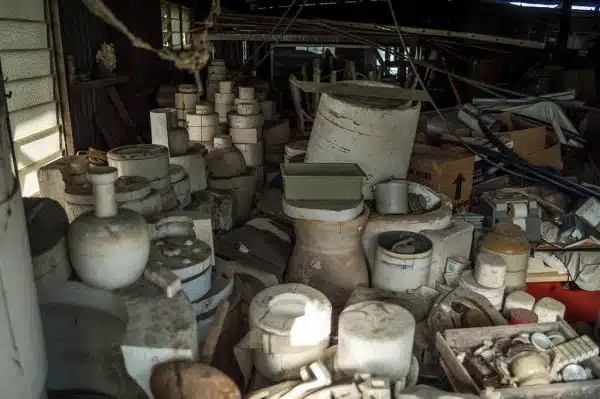




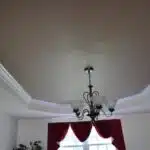





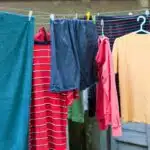






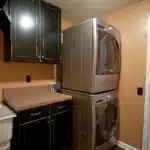



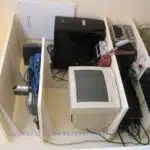





![How To Wash And Care For White Clothes 29 The only genuine borax soap cleanses hygienically saves the clothes and hands. 20 Mule-Team brand Boraxo white laundry soap [front]](https://green-life.blog/wp-content/uploads/2023/05/YDXLLCovnOjq-150x150.jpg.webp)